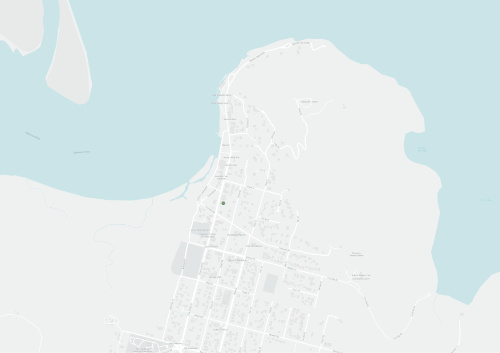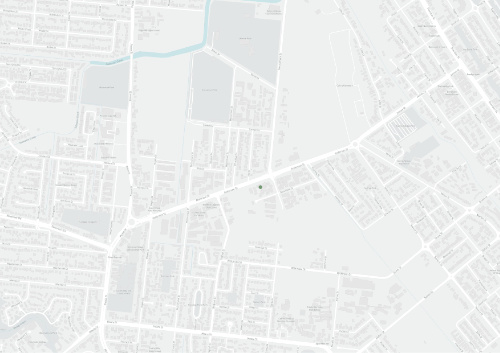Plan Explorer
Filter by:
Region
Topic
Sector
Other
Results
Western Cape Communities Trust investment strategy 2011-2022
This investment strategy released in 2011 presents an in-depth explanation of the funding allocation for the Western Cape Communities Trust, established by the Western Cape Communities Co-existence Agreement for a number of purposes such as natural resource management and funding allocation.
Western Cape Chamber of Commerce strategic plan 2010-2012
Obsolete CommunityThis strategic plan was developed following a review of the 2007 Western Chamber of Commerce Strategic Plan during a workshop in Weipa on the 20th of November 2009.
Western Cape Communities Trust & Western Cape Communities Coordinating Committee strategic plan 2009-2012
Obsolete StrategicThis document was released by the Western Cape Communities Trust (WCCT) and Western Cape Communities Coordinating Committee (WCCCC) as a plan to deliver on 4 key objectives within the mining lease area surrounding Weipa.
South of the Embley communities, heritage and environment management plan
Current OperationalThis community, heritage, and environment management plan was developed by the South of Embley working project group for the area of Rio Tinto Alcan's mining lease between Aurukun and Weipa in mid 2011.
Port of Weipa environmental management plan
Current StrategicThis environmental management plan was released by the North Queensland Bulk Ports Corporation as part of their environmental program with the objective of acting as a reference document for all then-current and potential users of the Weipa port.
Napranum Community Plan
Current CommunityThe Napranum Shire Council released a community plan in 2012 looking at future development for (then) the next 10 years.
Mapoon Aboriginal shire council community plan 2010-2020
Current CommunityThis community plan outlines how the community and council believe that the Mapoon area should develop between the 2010 and 2020 period and sets out how the issues affecting the Mapoon region at the time should've been addressed and a vision for the future Mapoon.
Cape York Peninsula Land Use Strategy: Land Use Program: Aspects of Commercial and Non-Commercial Fisheries of Cape York Peninsula
CYPLUSCYPLUS commissioned WBM Oceanics Australia to prepare this report which describes the level of use of commerical and non-commerical fisheries, factors affecing the environmental condition of said fisheries and habitats, and management issues relating to each of the fisheries and habitats in 1994.
Draft Cape York Peninsula Natural Resource Management Plan (2005)
Obsolete Government PolicyThe aim of the Plan is to ensure that natural resources are well managed, and protected where required, for the benefit of us all and future generations. The Plan aims as far as possible to be consistent with other regional strategies.
Kaanju Homelands Wenlock & Pascoe Rivers Cape York Peninsula Indigenous Protected Area Management Plan
Obsolete OperationalPrimarily, this Plan is for Kaanju people living on homelands, but it also serves as a guide for external land and resource management, conservation, service delivery, economic development and community development organisations and agencies, both government and non-government, engaged with Chuul
Kuuku I’yu Northern Kaanju Ngaachi Cultural Heritage Management Plan
Current OperationalThis document outlines the cultural heritage management plan for the Kuuku I’yu Northern Kaanju Ngaachi for the next six years from 2011 to 2017.
Cape York Peninsula Regional Biosecurity Strategy
Current StrategicCape York Natural Resource Management (Cape York NRM), Cook Shire Council (CSC), Weipa Town Authority, Wujal Wujal, Hopevale, Lockhart, Mapoon, Napranum, Aurukun, Pormpuraaw and Kowanyama Aboriginal Shire Councils and the Northern Peninsula Area Regional Council (NPARC) have collaboratively devel
Great Barrier Reef report card 2012 and 2013
Current InformationalThe Great Barrier Reef report card is part of the Reef Quality Water Protection Plan and measures the progress from 2009 to 2013 regarding the Reef Water Quality Protection plan 2009 targets.
Reef Water Quality Protection Plan 2009
Superceded StrategicThe intention of the Reef Water Quality Protection Plan 2009 was to ensure that the water quality of the Great Barrier Reef Lagoon was improved by addressing non-point source pollution caused by large-scale land use along the eastern coastline.
Northern Peninsula Area Council 2010-2020 Land and Environment Management Plan introduction
Current StrategicThis document is the introductory pages for the Northern Peninsula Area Council's 2010-2020 Land and Environment Management Plan released in December 2010.
Recently added
Cape York Peninsula Land Use Strategy: Natural Resources Analysis Program: Digital Geological Data for Cape York Peninsula
CYPLUSGeospatial information gathered previously was assembled and analysed to create a single integrated digital geological map of the CYPLUS area derived from the appropriate previous 1:250,000 series maps however with amendments and new information incorporated whre possible.
Cape York Peninsula Land Use Strategy: Natural Resources Analysis Program: Development, Maintenance and Coordination of the Geographic Information System (GIS) for Cape York Peninsula
CYPLUSThe CYPLUS GIS was created to support the collection, anaysis and display of natural resource, social, and economic data which arrose from the enactment of stage 1 of the Cape York Peninsula Land Use Strategy.
Cape York Peninsula Land Use Strategy: Land Use Program: Current Administrative Structures on Cape York Peninsula
CYPLUSThis project was commisioned in 1994 by CYPLUS to provide a description of the instiutional structures on the Cape York Peninsula that have relevance for land use planning and resource management.
Cape York Peninsula Land Use Strategy: Land Use Program: Economic Assessment and Secondary Tertiary Industries of Cape York Peninsula
CYPLUSThis report was commisioned by the CYPLUS task force for the Centre for Applied Economic Research and Analysis (CAERA) at James Cook Univeristy of North Queensland to perform a cross-sectoral economic assesment of the regional economy in the Cape York Peninsula.
Cape York Peninsula Land Use Strategy: Land Use Program: Fire on Cape York Peninsula
CYPLUSThis report was commisioned by CYPLUS and brings together published material on fire that is of relevance to the Cape York Peninsula.
Cape York Peninsula Land Use Strategy: Land Use Program: Indigenous Management of Land and Sea and Traditional Activities in Cape York Peninsula
CYPLUSThe Indigenous Mannagement of Land and Sea (IMLS) report was compiled by anthropologists and other specialists whose contributions relied on their long standinging familiarity with the Cape York Peninsula and the conditions of it's indigenous peoples.
Cape York Peninsula Land Use Strategy: Natural Resources Analysis Program: Groundwater Resources of Cape York Peninsula
CYPLUSThe study area of this report covered some 143,000 square kilometre, and is remote and isolated from all Australian population cenrs. This area includes Cape York Peninsula from north of Cooktown and some selected areas of the Torres Strait Islands.
Cape York Peninsula Land Use Strategy: Natural Resource Analysis Program: Flora Data and Modelling for Cape York Peninsula
CYPLUSThe Flora Data and Modellng Project was one of three projects undertaken by ERIN for the Natural Resources Analysis Program of CYPLUS stage 1.
Cape York Peninsula Land Use Strategy: Natural Resources Analysis Program: Insect Fauna Survey of Cape York Peninsula
CYPLUSIt was estimated that two out of every three species of living thing on the Cape York Peninsula are insects. This report surveyed a cross section of the Cape York Peninsula's insects and this provides information on the largest portion of the regions biodiversity.
Cape York Peninsula Land Use Strategy: Land Use Program: Land Degradation in Cape York Peninsula
CYPLUSThis project evaluated land degradationin terms of soil erosion and soil salinity. Soil erosion was examined by the Queensland Department of Primary Industries and the Australian Geological Survey Organisation with assistance from the Bureau of Resource Science.

